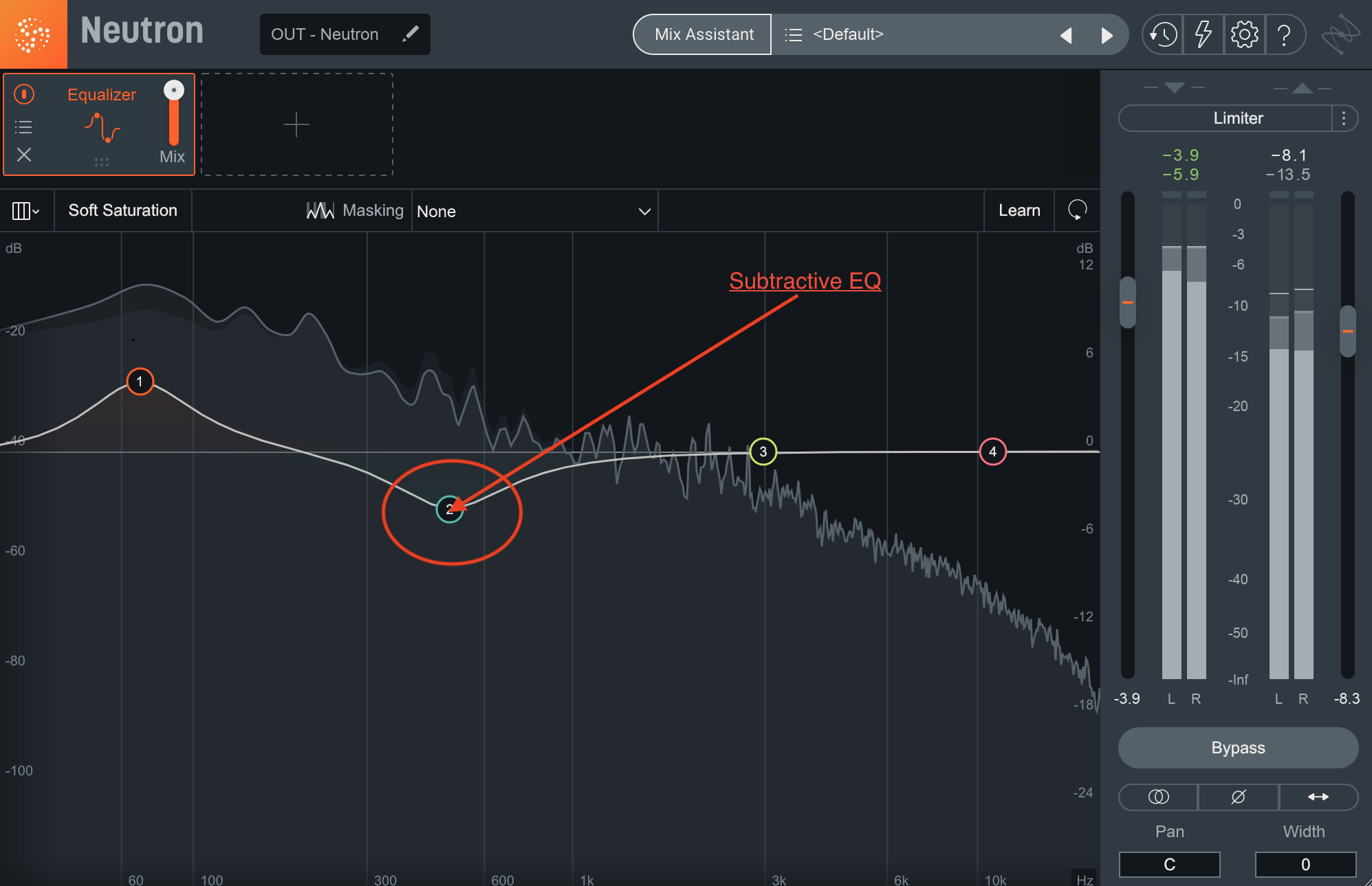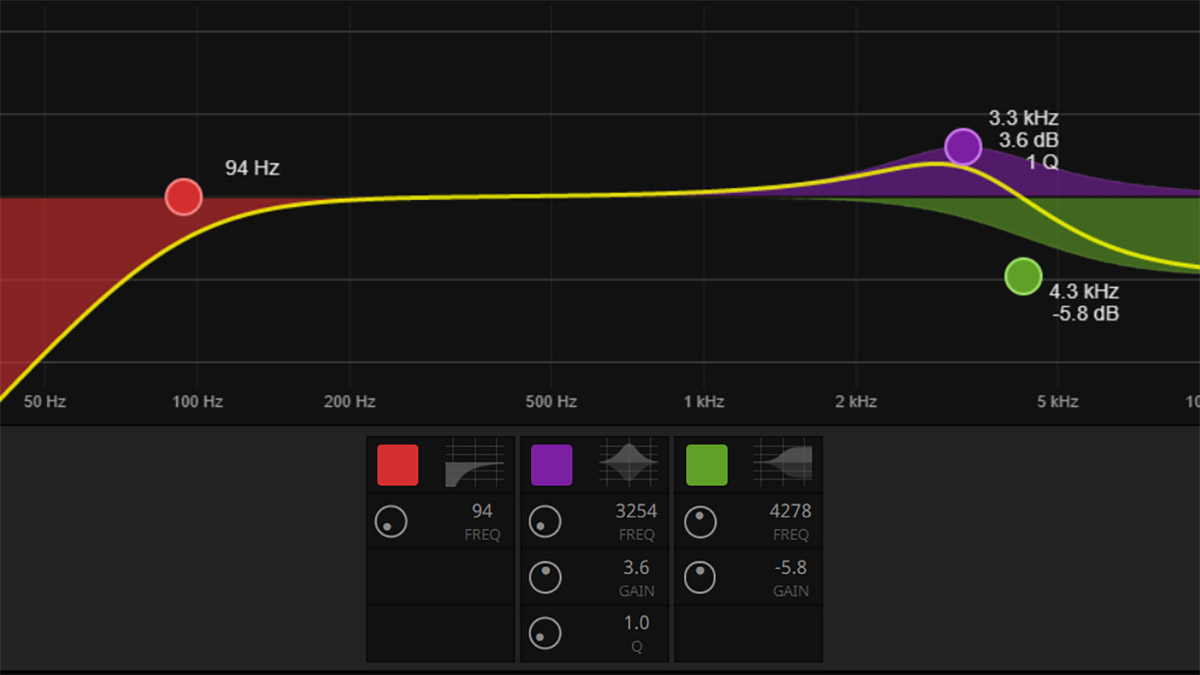Subtractive EQ cutting involves removing frequencies instead of boosting them, resulting in a cleaner and more natural sound. To master this technique, consider using narrow Q values, making smaller cuts, and listening critically.
Using Subtractive EQ cutting effectively can be the difference between a muddy mix and a clean, polished one. It involves removing certain frequencies that are causing unwanted resonance or clutter, rather than boosting others. This technique can help create a more natural and transparent sound.
To achieve optimal results, consider using narrow Q values, making smaller cuts, and listening critically to the changes. With practice, Subtractive EQ cutting can help you precisely and effectively shape your mix to create a more professional sound.

Credit: www.izotope.com
Identifying Problem Frequencies
To achieve a balanced mix in a track, identifying problematic frequencies is key. With subtractive EQ cutting techniques, you can effectively eliminate unwanted frequencies and leave a powerful and coherent mix. Try experimenting with different EQ settings to enhance your tracks further.
As a mixing engineer, it’s important to have an ear for identifying problem frequencies in a track. Problem frequencies are the frequencies that cause a track to sound muddy, cluttered or lack clarity. One of the essential skills of eq cutting is to identify and remove these frequency issues. In this article, we will discuss some tips and tricks for subtractive eq cutting and how to identify problem frequencies to create a clearer and defined mix.
Analyzing The Frequency Spectrum
Before we start eq cutting, it is essential to analyze the frequency spectrum of a track. The frequency spectrum shows the intensity of each frequency in a track and helps us to identify potential problem frequencies. We can use a spectrum analyzer to visualize the frequency spectrum, but it’s also important to listen to the mix with a critical ear. When analyzing the frequency spectrum, look out for frequencies that are too loud or too quiet. Identify which frequency ranges that need attention.
Listening To The Mix With A Critical Ear
Listening to the mix with a critical ear is the most important part of identifying problem frequencies. We need to train our ears to recognize frequencies that sound unpleasant or problematic. Often, these frequencies will sound harsh and piercing. We should use a high pass and low pass filters to isolate certain frequency ranges and focus on what we hear. It’s also vital to compare the mix to reference tracks to hear how they balance different frequencies. Once we identify the problem frequencies, it’s time to start eq cutting. Remember, it’s better to be subtle and use narrow cuts to avoid removing too much of the track’s sound. Eq cutting is a tedious and time-consuming process, but it’s essential for a professional and polished mix. Using these tips and tricks for subtractive eq cutting and identifying problem frequencies will help you create a mix with clarity, definition, and balance.

Credit: www.soundgym.co
Tips For Cutting Problem Frequencies
EQ cutting is a fundamental skill that every sound engineer should practice. It is an essential technique to fix problems like frequency buildup and interference in the mix. However, not every cut is created equal, and making the wrong move can cause more damage than good. In this post, we will share some practical tips for cutting problem frequencies.
Using Narrow Q Settings
The Q setting on the EQ determines how wide or narrow the frequency cut will be. When cutting problem frequencies, it’s essential to use a narrow Q setting to target the specific frequency range you want to remove. A broad Q setting may affect other frequencies, leading to a hollow sound. By using a narrow Q, you can pinpoint and remove the exact frequency range that is causing the problem.
Cutting Only A Few Db At A Time
When dealing with problematic frequencies, it’s often tempting to cut them aggressively. However, cutting too much can create a thin and unnatural sound. Instead, try cutting only a few dB at a time, then listen to the result. If there’s still a problem, make another slight cut and repeat the process until the problem is fixed. The goal is to achieve a natural sound that sounds good to your ears.
Aiming For A Natural Sound
It’s critical to aim for a natural and organic sound when cutting problem frequencies. As mentioned earlier, aggressive cuts can lead to an artificial and thin sound that doesn’t translate well to different sound systems. When making the cut, listen carefully, and make sure that the sound remains balanced and natural. Keep in mind that EQ cutting is just one part of the mix, and it’s crucial to maintain a harmonious balance throughout the whole spectrum.
Conclusion
By following these tips, you’ll be able to cut problem frequencies effectively and create a better sounding mix. Remember to use a narrow Q setting, cut only a few dB at a time, and aim for a natural sound that feels organic and balanced. With some practice and experimentation, you’ll be able to improve your sound engineering skills and create mixes that sound fantastic on any sound system.
Tricks For Enhancing The Mix With Subtractive Eq
Learn how to enhance your mix with subtractive EQ cutting tips and tricks. By carefully removing unwanted frequencies, you can create a cleaner and more balanced sound that complements your audio tracks. Use these techniques to take your music production to the next level.
HTML Response:
Subtractive EQ is an essential mixing technique that involves cutting and filtering frequencies that aren’t necessary for the final mix, resulting in a cleaner sound. This technique helps to carve out space for key elements and balance the mix while improving clarity and reducing muddiness. In this article, we’ll share some tricks for enhancing the mix with Subtractive EQ.
Cutting Unused Frequencies
The first trick for enhancing the mix with subtractive EQ is to cut the unused frequencies. When mixing audio, many frequencies in the track are usually not necessary for the final mix. These unnecessary frequencies can make the mix sound muddy and cluttered and can compete with other elements that should be emphasized. Use your EQ to eliminate the frequencies that you don’t need, and make room for the elements that define your track.
Carving Out Space For Key Elements
Carving out space for key elements is another technique you can use when mixing audio with Subtractive EQ. Every instrument has specific frequencies that define its sound, and you can use EQ to bring out these frequencies and make them prominent in your mix. For example, use EQ to cut the low end of a guitar track to make space for the bass guitar, or to cut the high end of a vocal track to make room for the cymbals in a drum kit.
Creating Contrast With Selective Cuts
Selective cuts help create contrast and make your mix sound more dynamic. Use your EQ to cut specific frequencies in one instrument while boosting it in another to create contrast and tension between the elements in your mix. For example, in a guitar solo, you can cut the low frequencies to make it stand out from the bass guitar track, which you can boost the bass frequencies in to create separation and space. This technique makes your mix more interesting and engaging.
Common Mistakes To Avoid
Subtractive EQ is the process of removing unwanted frequencies from an audio signal. It’s a powerful tool that every audio engineer should know how to use effectively. While it seems a simple process, there are a few common mistakes that people often make while cutting with subtractive EQ. In this section, we’re going to discuss some of the mistakes that you should avoid while using subtractive EQ.
Overdoing The Cuts
One of the most common mistakes people make with subtractive EQ is overdoing the cuts. It’s important to remember that subtractive EQ is not a complete solution. Cutting too many frequencies at once can make the sound thin and weak. So, it’s essential to listen carefully and only remove the frequencies that are not required in the mix.
To avoid overdoing the cuts, start with narrow cuts of the frequencies that are not needed and listen to how it’s impacting the sound. Repeatedly do it removing less or more until it sounds right. The idea is to make the sound clearer without hollowing out or thinning.
Cutting Without Listening To The Entire Mix
Another common mistake is cutting without listening to the entire mix. It’s not a good idea to cut EQ on soloed channels without listening to them in the context of the whole mix. You may end up cutting frequencies that might be needed for the song or even create phase issues with other channels. Therefore, it’s essential to listen carefully to the entire mix while making cuts before you zero in specifically on one track.
Ignoring Phase Issues
Phase issues are another mistake that people often make while subtractive EQ cutting. When you’re cutting out specific frequencies, it’s very easy to create phase issues with other tracks. This can often result in a weaker and less cohesive mix. You can easily fix phase issues using tools such as a phase correlation meter, which can help to ensure that the audio signals are in phase with each other. Ignoring phase issues may leave your mix lacking in punch and dynamics.
Mastery of the subtractive EQ process takes time and practice. It’s essential to avoid these common mistakes to ensure that your EQ cutting helps in making your mix sound cleaner and polished rather than worse. Ultimately, it’s essential to always listen carefully and trust your ears while using subtractive EQ to make sure you are creating a balanced and clear mix.

Credit: www.mixinglessons.com
Frequently Asked Questions Of Subtractive Eq Cutting Tips Tricks
What Frequency Should I Cut When Mixing?
When mixing, the frequency you should cut depends on the specific sound you want to enhance or diminish. In general, cutting frequencies below 100 Hz can help to reduce unwanted rumble and mud, while cutting frequencies in the midrange between 500-3000 Hz can help to reduce harshness and improve clarity.
Ultimately, the best approach is to use your ears and experiment with different frequency cuts to achieve the desired sound.
What Is The Opposite Of Subtractive Eq?
The opposite of subtractive EQ is additive EQ. Additive EQ involves boosting certain frequencies to enhance the sound without removing other frequencies.
What Is The Difference Between Subtractive Eq And Additive Eq?
Subtractive EQ removes frequencies, while additive EQ boosts them. Subtracting an EQ band reduces its frequency range, while adding it to a track rebalances the overall mix.
What Frequency Is Sibilance In Eq?
Sibilance in EQ typically falls in the mid to high frequency range, around 2-10kHz.
Conclusion
In essence, subtractive EQ cutting is an essential tool that every sound engineer should master. By following the above tips and tricks, you can enhance the quality of your sound recordings and ensure that they stand out from the rest.
Remember to always trust your ears when cutting frequencies, and don’t be afraid to experiment with different techniques. With time and practice, you will be able to achieve those perfect sounds that you’ve been striving for. Happy mixing!